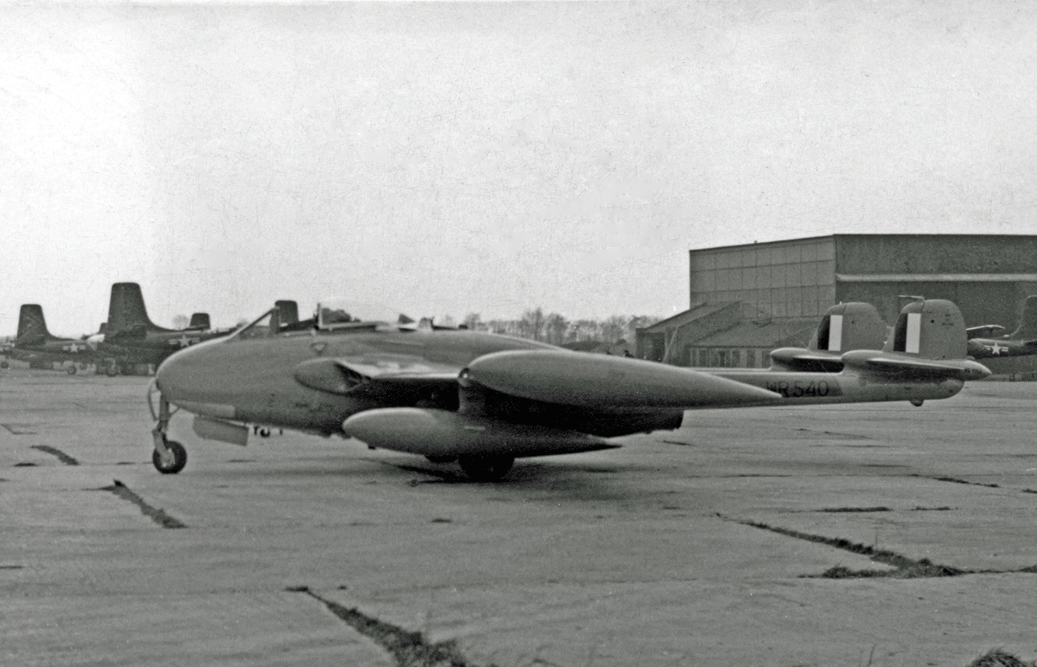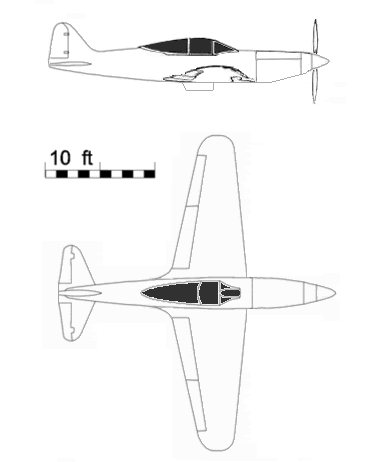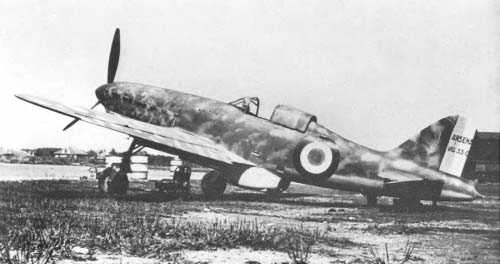
After the failure of the AA-67 turboprop-powered long-range fighter to enter service due to several aerodynamic problems, the RAAF turned to de Havilland Australia (DHA) for a new interceptor to replace some of the older FA-51B Mustang fighters. DHA had already sought out a licence to build its parent company's DH.100 Vampire jet-powered fighter but the Vampire lacked the necessary range. The RAAF asked DHA to consider a variant with a turboprop replacing the DH Goblin turbojet, but the performance was poorer and the fuel consumption still relatively high. DHA then turned its attention to the more powerful Rolls-Royce Nene turbojet which would improve performance in hot and high conditions and allow for greater structural changes and increases in weight. The resulting DHA-1 Spider Crab is a hybrid, the main fuselage 'pod' is essentially that of the Vampire but the wings have been enlarged and fitted with wingtip fuel tanks to increase range (it should be noted that these wings are not the same as the 'Thin-Wing Vampire' which is entering RAF service as the Venom, although both wings are quite similar). The greater airflow mass required for the Nene has also required larger wingroot intakes.
Using imported components, the prototype was first flown during June 1947 and fifty production aircraft were built during 1948-49. The majority of these airframes are entirely built in Australia, and the Nene turbojets have been produced by the Commonwealth Aircraft Corporation's factory in Melbourne under licence.
Length: 30 ft 9 in (9.37 m)
Wingspan: 41 ft 8 in (12.70 m)
Height: 8 ft 10 in (2.69 m)
Wing area: 279 ft² (25.9 m²)
Empty weight: 9,182 lb (4,164 kg)
Max. takeoff weight: 15,000 lb (6,803 kg)
Powerplant: 1 × Rolls-Royce Nene IIIA centrifugal turbojet, 5,000 lbf (22.24 kN)
Maximum speed: 648 mph (1,042 km/h)
Range: 1,120 miles (1,800 km)
Service ceiling: 39,500 ft (12,040 m)
Rate of climb: 9,000 ft/min (45.7 m/s)
Armament: 4 × 20 mm Oerlikon FFB(A) cannon (150rpg); 8 × 3-inch rocket-projectiles or 2 × 1,000 lb (453 kg) bombs






